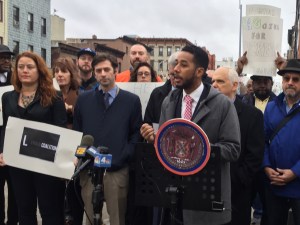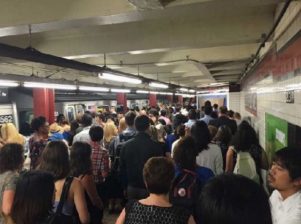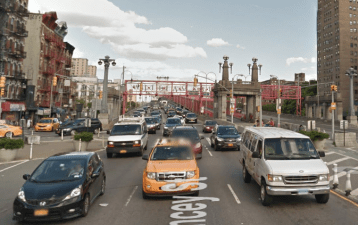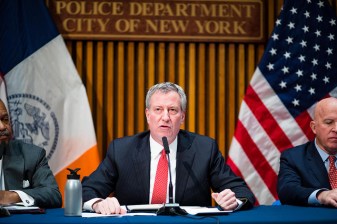Meet the Start-Up Vultures Eager to Gobble Up the Scraps of the MTA and DOT’s L Train Plans
"The New L" aims to take advantage of DOT's timid approach to transit priority on the Williamsburg Bridge to offer "luxury shuttles driven by professional chauffeurs."

A tech start-up wants to take advantage of the public’s lack of faith in the MTA and DOT’s plan to keep transit riders moving when the L train shuts down.
Dubbed, “The New L,” which popped up on Twitter yesterday, the company is advertising “luxury shuttles driven by professional chauffeurs” for $155 per month.
The company’s website promises “a guaranteed, reliable ride at your door each day,” because the MTA’s L-shutdown mitigation plan “won’t work.” The MTA’s plan “leaves 75-85% of riders … who are expected to take other subway routes when the L train shuts down. Anyone who is familiar with the MTA’s already-chronic delays and overcrowding knows that without additional alternatives, this would be chaos.”
The New L promises an easy fix for North Brooklynites anxiously awaiting the shutdown, targeting the wealthier amongst them. The company’s team of “Brooklynites and transportation professionals… is exclusively focused on solving for the L Train shutdown, providing a luxury commute at a fixed monthly rate.”
“You don’t have to book your rides each morning, wondering if there will be cars available or crazy surge pricing,” they write. “You can wake up knowing you will have a guaranteed, reliable ride at your door each day.”
By poaching bus riders, the service is almost guaranteed to make the whole transportation system slower and less efficient, much like Uber and Lyft do in central cities.
The “New L” scheme preys on DOT’s timid mitigation approach, which won’t give buses an exclusive lane on the Williamsburg Bridge during the shutdown, but merely restrict the bridge to buses and vehicles with three or more passengers [PDF]. The plan also maintains the status quo on the three other main East River bridges, despite expected volume increases as drivers seek other routes.
Of the L train’s 225,000 riders who cross under the East River, the vast majority will be diverted to other subway lines. Of the remainder, DOT and MTA expect a few thousand to opt for ferries or bikes. The rest, about 30,000 daily riders, are expected to take the MTA’s “L-ternative” shuttle service.
At peak times, the MTA is planning to run 80 buses per hour over the bridge. Add local traffic, trucks, liveries, and other vehicles, and the buses will be totally stuck, according to J.P. Patafio, who runs the surface transit division of the TWU Local 100, the MTA’s largest union.

He said the existence of “The New L” and other pop-up livery services demonstrates the need for the DOT to give buses even more priority on the Williamsburg Bridge.
“It’s just not going to allow the flow of bus service that’s going to be necessary for moving 40,000 people,” Patafio said of the plans for the bridge. “If we don’t have a dedicated bus lane, then we’re going to be fighting for space with these ‘luxury’ services and Ubers and Chariot and those type of people.”
The MTA can pull out all the buses and operators it has, but Patafio said it won’t make a difference if those buses don’t get priority.
“It’s not just a question of having the machinery and workers available, it’s a question of how you’re going to make the conveyor belt move,” he said. “Everybody understands the efficiency of it. That’s why we have mass transit.”
The logic extends past the bridge onto Grand Street, which will carry the bulk of displaced L train riders who end up on buses. On Grand, DOT is planning to install a westbound bus-only lane, but local access will still be permitted.
“You can’t have a busway in Manhattan and not have it in Brooklyn, and think it’s gonna work,” Patafio said. “Brooklyn’s going to be a mess. I wouldn’t want to be small shop owner on Grand Street without a bus lane, because Grand Street is going to be a parking lot.”
Streetsblog reached out to The New L for comment, but did not receive a reply.





